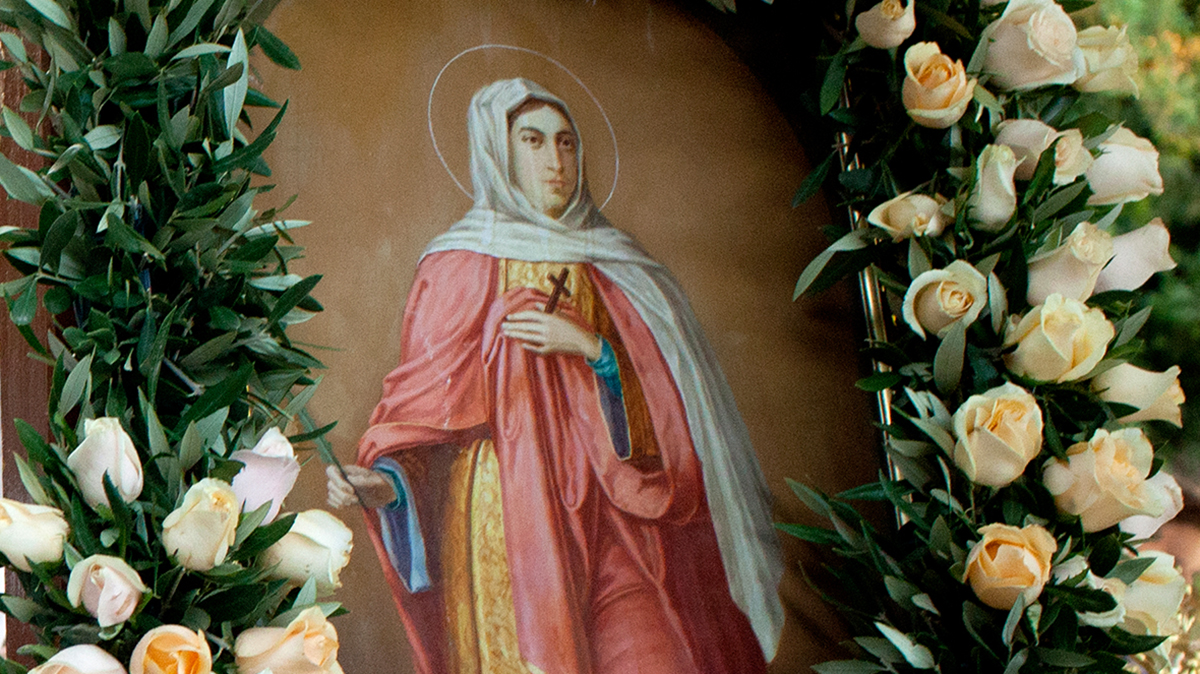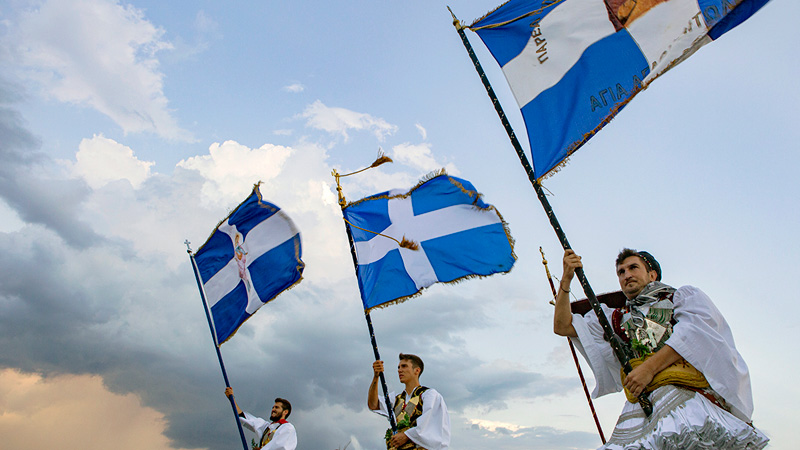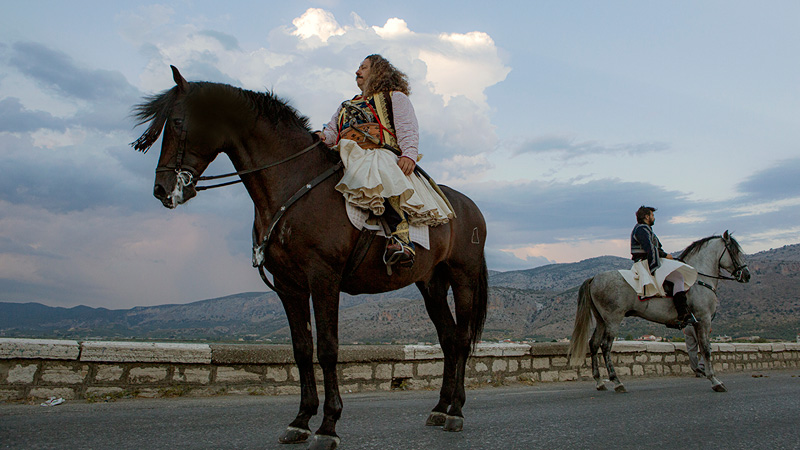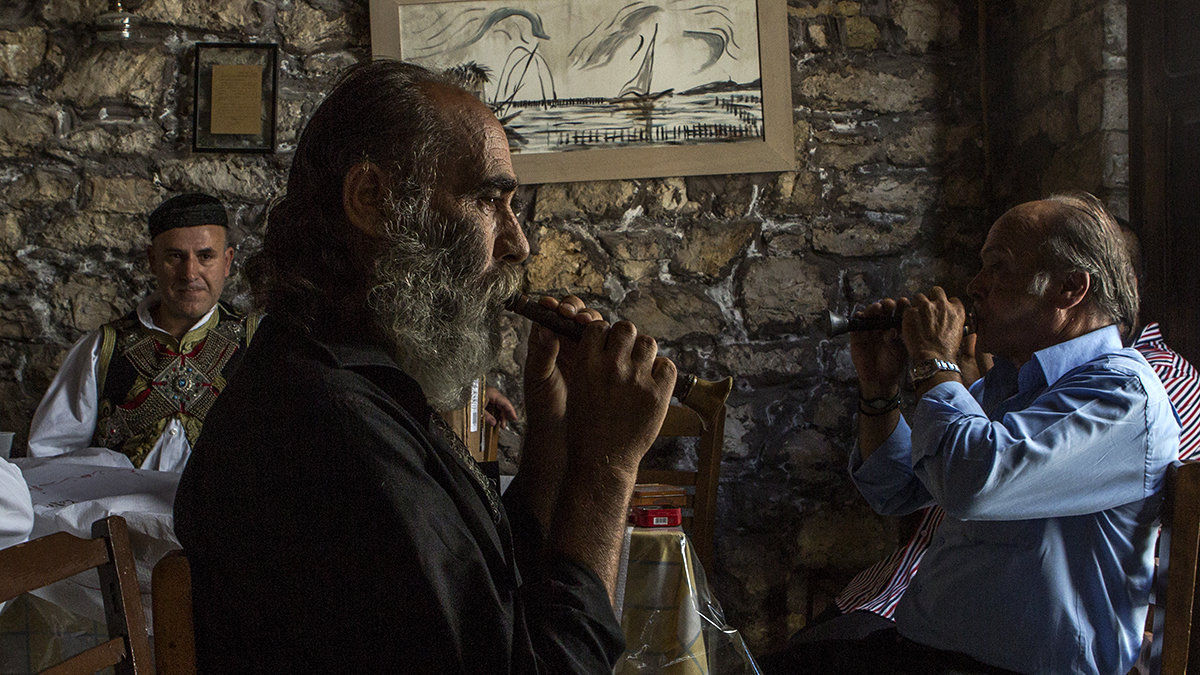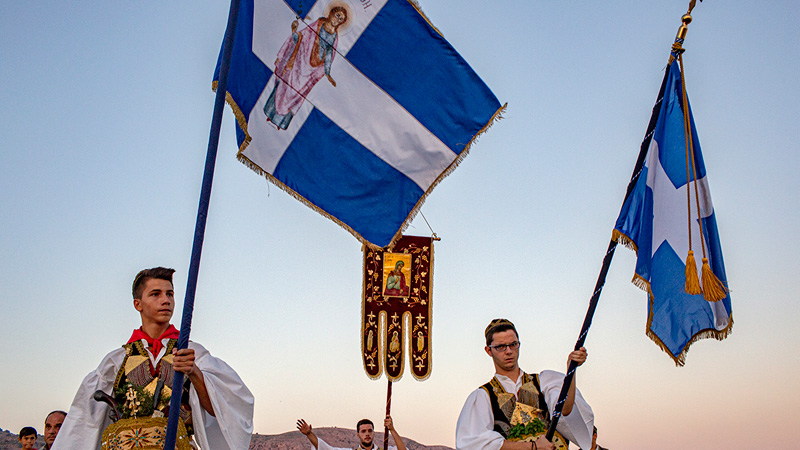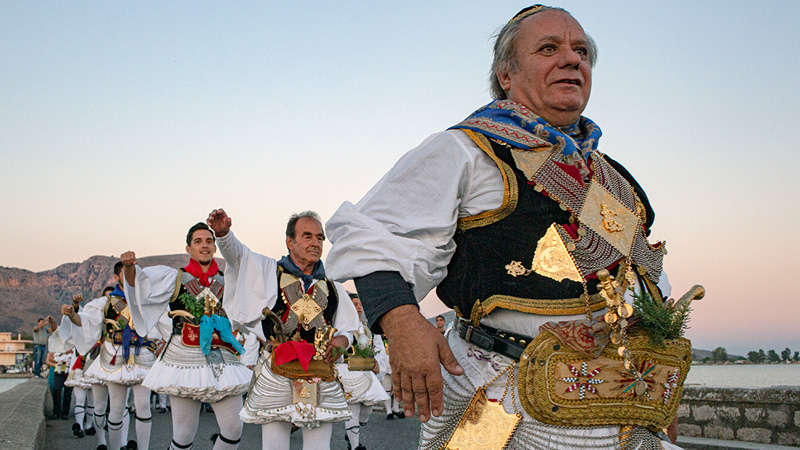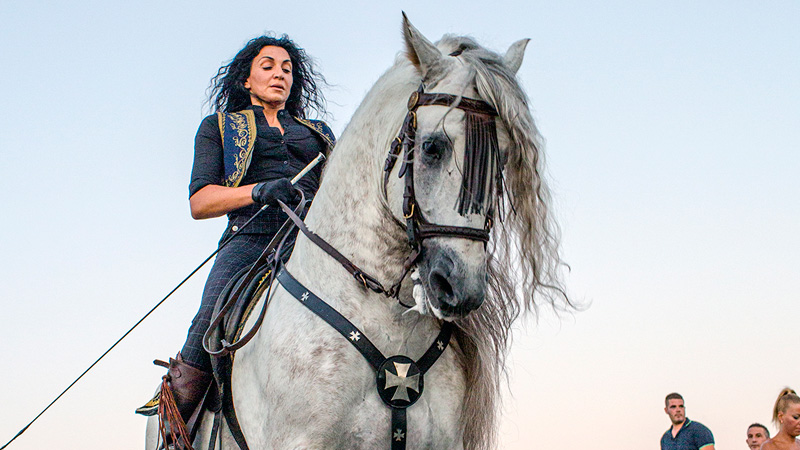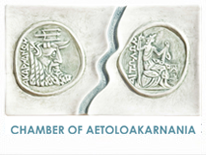 |
National Inventory
|
|
The Feast of Saint Agathi in Aetoliko Five days of celebrations and festive events that take place in Saint Agathi (Aetoliko), regarding the historical events of the Greek revolution of 1821, the liberation of Aetoliko from the Turks and the paying tribute to the fallen fighters of the revolution. It starts on August 15th and ends on August 24th. Includes overnight parties and parades. It was inscribed on the National Inventory of Intangible Cultural Heritage of Greece in 2020.
The process of organizing the festival begins about five days before the event, on 20th of August by organizing the people in groups. The organized groups are created according to the standards of the old “Ntaifas Thief” groups: 15 to 20 members. The leader is the captain who is a person respected and accepted by all, in the hierarchy follows the henchman and finally the class of old thieves. They all have great respect for each other and specially to trust and be loyal to their superiors, both to their captain and his henchman. Each group is named after the captain, who has the absolute power and the absolute responsibility for its organization, from the costume to the supplies that will be needed and the organ players (zygia). “Daifas” is organized after the Divine Liturgy, on the day of the Feast of Virgin Mary, on the 15th of August, where all the groups of separately armed and cavalrymen meet in a hangout, that they have chosen before and they put “giomata”, which means the remuneration of the Roma organ players, under supervision of the captain. This is followed by food and drink until everyone puts “refene” (direct loan). Taking the money, the captain wishes them "All the best for the year and the next year all together in the count ", which means, in the money count. With this process, the composition of the group is finalized, while the captain is appointed responsible for the expenses, for their supplies, manages the group and communicates with other captains about anything related to the good conduct of the festival, with first and foremost care, the selection of the best costume for everyone. Every year the group is made up from the same people. It is possible for other people to join the group, such as relatives or friends of the riders or other riders, or people who are not related to the specific group, but they just want to participate. This happens in consultation with the captain either on the day of the establishment of the group, before or several times during the festival. Every new person is welcomed by everyone in the group and they accept them with great pleasure. After all, the more people who participate in each group, the stronger and more accepted is the group, considered by all the celebrants and the visitors. For this reason, every year the composition of the group can change to more or less, if some people are elderly and leave or they have died.
On the 21st of August, early in the morning, a specific ritual begins: It is the gathering of the fighters and the cavalry, which is led by the captain and “zygia” and aims to gather the whole group of the celebrants accompanied by the music. On the way to other houses, they receive wishes and treats from the housewives, who treat them with “ouzo” and “rivani” outside their houses. If on their way they meet other groups, then the captains greet and kiss each other, exchanging wishes. In the streets and shops of Aetoliko there is a festive atmosphere with food and parties. At 19:00 in the afternoon they gather again in the square of Aetoliko, in front of the Church of Virgin Mary, and light their traditional candle. Then they gather in a procession led by the flag bearers, and start a journey with destination of Saint Agathi chapel. There they raise the flags, worship and light a candle. Then each group goes to its own hangout, where they lay down their arms and sit at their tables to rest. Then, food and drink follow until dawn and after that they retire to their “giatakia”, which are the tents that have been set up from very early in the morning. Many people from Aetolia go up to Saint Agathi chapel in the evening, to participate in the party and get in the spirit of the festival. After the establishment of each group in the following days they make sure to procure everything that is necessary for the festival such as food and drinks. Five days later, and after everything has been prepared, on 20th of August, at dusk, the fighters gather again in their hangout and ouzo and platters with the traditional local dessert, rivani, are served to all. This process is called “agonaria” and is completed with traditional songs, which are sung by the eloquent members of the group followed by the rest of the participants. Then follows the traditional dance of the group and the visit to other hangouts where other groups of celebrants are located. They receive the respective ouzo and rivani treats. The groups exchange wishes with each other and continue their party until late. On the afternoon of the 22nd of August, the groups of the celebrants line up at the beginning of the road, where, led by the captains, they welcome the fighters from the neighboring Stamna village. The people of Stamna arrive with magnificence and valor lined up in a phalanx, one behind the other, led by their captain. During the meeting, the captains first greet each other with hugs and cross kisses and exchange wishes. The greetings are followed by all fighters from both areas, and then each group goes to its place and starts eating and drinking. Companions from all the surrounding areas go up to the monastery at night and accompany the fighters at their feast. They are all stocked with food and drink. The celebrants welcome them all, greet them and party with them in a festive atmosphere. Before dawn the groups compete in bird catching. Which group will last until the morning and which “zygia” will play better. The trigger is given by each captain, who invites his team to the plateau of the monastery to start the process. If the process ends before dawn, everyone goes to sleep, except for two members of the group, who remain awake, to wake the others in the morning. On the morning of the 23rd of August, everyone goes to church and the memorial prayer follows at the tomb of Panaretos Palamas and all the fallen fighters of the Greek Revolution are commemorated. Immediately after, all together " brotherly " they party and finally they gather again and prepare for the return. At 19:00 they arrive in Kefalovrysso, where “zygia” play the typical traditional "song from the area of Saint Agathi " and continue with a second destination Aetoliko or Stamna. The parade begins first with the fighters lined up in fours or fives and the gypsies to follow, playing for each group separately. Then, the horsemen follow. The crowd watch the procession, expressing admiration, applause and wishes to all. All together the celebrants gather in the square, where the dance of the fighters begins in a circle, led by the captain of the first group to be the first to start the dance and to be followed by the rest of his company, by age, accompanied by “zygia”. Afterwards, the groups make a walk in Aetoliko where they receive treats and wishes. There is a festive atmosphere everywhere and all the groups, after their walk, return to their hangouts and sit together in groups. With the trigger of the captain, an all-night meal begins, accompanied by drums and flutes. The next day the 24th of August, there is a similar party that lasts all night with the celebrants not wearing their traditional costumes. At dawn, the “bandonada” starts, which is their walk to the alleys of Aetoliko, accompanied by “zygia” with dance and songs. So, the end of the festival is marked with wishes from everyone for the next year. For the festival of Saint-Agathi, the Roma organ players are necessary, who are organized in “zygies” several days before. They use two “zournades” which are wooden wind instruments and one “ntaouli” or “ntavouli”, a musical instrument that produces sound when the organist strikes both of its leather faces with two sticks. The “pipiza” or “karamouza” is a wind musical instrument with a double tongue. This is the reason for its sharp penetrating sound. There is the first “zournas”, which plays the melody, and the second “zournas”, which simply holds the balance, the bass.
Internet sources |
READ MORE
- The Feast of Saint Agathi in Aetoliko - Historical data
- The places associated with the realization of the festival
Source: |
 |
INTANGIBLE CULTURAL HERITAGE of UNESCO |









